1006 Morton Street
Baltimore, MD 21201
410.576.9131 | RW1haWw=
October 15 2007
Solar Decathlon - Icarus by Georgia Tech
"Icarus - Sustaining Life with Light" is the name/theme of the 2007 Georgia Tech entry in the Solar Decathlon. The team really took the idea of "Icarus" and used it to make some compelling material and technology choices.
Solar Tracking
The first thing one notices are the uni-axial altitude tracking solar panels on the roof. The panels are hinged about a pivot with a small voltage motor attached that is controlled by a solar pathfinder mounted on the roof. The whole roof then has a dynamic diurnal movement that works to capture as much solar radiation as possible throughout the day. Their strategy here did not pan out however. A Georgia Tech teammember confided to me that the tracking system was not turned on for the competition because the earned efficiency of the panels by having them at exactly 90° to the sun does not make up for the loss of power to the motors that move the panels. Quite an admission if you ask me. Anecdotally I know that one can expect a roughly 10% drop in PV output if they are applied "flat" as opposed to the specific solar incidence angle at your given latitude. The team obviously chose to just mount their panels at ~30 degrees for the competition and forgo the use of the tracker. Probably a wise decision if that system was going to cost them energy!
That said, seasonal adjustments to a PV array are quite beneficial to energy output. More on that later...
Mediating Light
The Icarus house, again the theme being "sustaining life with light", makes several material and design decisions in an effort to use light or mediate light within their house. Sometimes this idea is as direct as using solar radiation to generate electricity as shown by the PV panels on the roof and south facade. At other times "light" generates solar domestic hot water. At other times light is used to illuminate the space or to help condition the space. At these times the Icarus house is looking less for an intense light and more for a mediated soft light.
One example are the horizontal translucent bands that wrap around the facade from the East to the West. Regardless of what you might personally think of the aesthetics (I overheard a number of people criticizing the look), it must be noted that these bands do a very good job at shading the south facade of the building. Their depth and angle shade the south facade. Their translucency allows soft diffuse light to hit the facade however. That coupled with the use of Aerogel filled polycarbonate walls, means that the interior of the space has a wonderful light quality. The bands, furthermore, are expressive of the different conditions on the east and south facades by beginning as parallel lines to the facade and then turning up to become perpendicular. It is nice to see architecture becoming so responsive to its environment.
The idea of light mediation is carried through further on the roof where you can see horizontally mounted translucent sheets just beneath the PV panels. These sheets help to shade the roof of the building from direct solar gain but still allow light to enter the house through the Aerogel filled pillow roof structure.
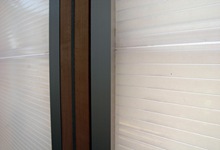 I have mentioned Aerogel twice now and so I better discuss this a little more. The roof and walls of the building (apart from the opaque areas) use a material called Aerogel. Aerogel was developed by NASA as an insulation to protect the shuttle during reentry. The interesting thing about Aerogel is that it is the most air filled
I have mentioned Aerogel twice now and so I better discuss this a little more. The roof and walls of the building (apart from the opaque areas) use a material called Aerogel. Aerogel was developed by NASA as an insulation to protect the shuttle during reentry. The interesting thing about Aerogel is that it is the most air filled 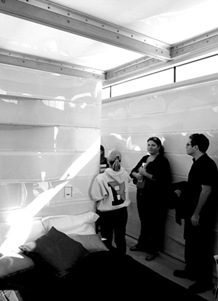 substance known in to man, natural or manmade. This makes it a wonderful insulator and it is still translucent. The walls of Icarus are two sheets of .5 inch polycarbonate with an airspace in between. The team claims that by filling the polycarbonate cells with Aerogel, this assembly has an R-rating of 20! (R-13 is typical for stick framing) The wall also remains translucent! The roof is treated in a similar manner. It is composed of a pillow of ETFE (Bejing Olympic Swimming Pool / Herzog and DeMuron) filled with Aerogel. This assembly is rated at R-30 and again lets soft glowing daylight into the space. On the right you can see translucent pillow roof structure in-filling with filch beam framing of the house.
substance known in to man, natural or manmade. This makes it a wonderful insulator and it is still translucent. The walls of Icarus are two sheets of .5 inch polycarbonate with an airspace in between. The team claims that by filling the polycarbonate cells with Aerogel, this assembly has an R-rating of 20! (R-13 is typical for stick framing) The wall also remains translucent! The roof is treated in a similar manner. It is composed of a pillow of ETFE (Bejing Olympic Swimming Pool / Herzog and DeMuron) filled with Aerogel. This assembly is rated at R-30 and again lets soft glowing daylight into the space. On the right you can see translucent pillow roof structure in-filling with filch beam framing of the house.
Computer Modeling
The hidden marvel of this house are the computer simulations used for design, and the ongoing computational diagnostics which maintain the operational efficiency of the house. More on the specifics later...
I was told by the person operating the houses "brain" computer that the house was connected to the internet at all times and was constantly updating its prediction for energy consumption based on both live weather data and day/time occupational data. The house was also able to track each appliance through a centralized computer system to predict the available energy in the battery bank so that occupants could be actively involved in the efficient operation of their house.
This hands-on, dynamic, data-driven simulation system is very exciting to see in operation. Imagine the potential for people to tweak their behavior and daily routines based on the fluctuations of nature and the availability of local resources. It reminds me of the Prius-syndrome where Toyota Prius owners become hyper attentive to the fuel efficiency of their vehicles.
For more information please visit the official Georgia Tech Icarus website.
Please explore more of the Icarus project in the following slideshow.
svgallery=SVGallery_GeorgiaTech
Recent Posts
Reimagining Harborplace to Create Space for Both Private Development and Expanded Public Space » Lawyer's Mall Reconstruction Progress » Confronting the Conventions of Customary Practice » Reconceived Facades: New Roles for Old Buildings » Ivy Bookshop Opens for Business! »
Categories
Yellow Balloon Baltimore » Products + Technology » Industry + Practice » Other » Architecture »
Links
Organizations
- USGBC Baltimore Regional Chapter »
- AIA - American Institute of Architects »
- USGBC »
- The Walters Art Museum »
- Green-e »
- Center for Building Performance and Diagnostics (CMU) »
- Green Globes »
- Prefab Lab (UT) »
- Center for Sustainable Development (UT) »
- Architecture 2030 »
- Bioneers »
- Street Films »
- FreeCycle »
- Chesapeake Bay Foundation »
- Archinect »
- BD Online - The Architects Website »
- National Wildlife Foundation »
- Natural Resources Defense Council »
- Overbrook Foundation »
- Merck Family Foundation »
- Ecology Center »
- New Building Institute »
- Neighborhood Design Center »
- The Leonardo Academy »
- ZigerSnead Architects LLP »
- The Rocky Mountain Institute »
- Urban Habitats »
- ACORE - American Council on Renewable Energy »
- Parks and People Foundation of Baltimore »
- Open Society Institute of Baltimore »
- Natural Capital Institute »
- Passive House US »
- Svanen Miljomark »
- Green Restaurant Association »
- Rocky Mountain Institute »
- Green Exhibits »
- Green Roundtable »
- John Elkington - SustainAbility »
- SustainAbility »
- Building America »
- Endangered Species Program - Fish and Wildlife Service »
- Congress for the New Urbanism »
- Urban Land Institute »
- Cool Roof Rating Council »
- Montgomery County (MD) Public Schools Green Building Program »
- National Institute of Standards and Technology Software »
- Scientific Certification Systems »
- Community Greens »
- CBECS »
- CASE - Center for Architecture Science and Ecology »
Interesting Sites
- The Ecologist »
- Treehugger »
- Grist »
- WIRED »
- Planet Architecture »
- MiljoBloggAktuellt - Environmental News Blog (Swedish »
- Sustainable Design Update »
- Eikongraphia »
- World Architecture News »
- The Cool Hunter »
- Design Center »
- ZEDfactory »
- Architen Landrell Associates Ltd. »
- Environmental Graffiti »
- businessGreen »
- Best Green Blogs Directory »
- Groovy Green »
- EcoGeek »
- Urban Ecology »
- Locus Architecture »
- Urbanite »
- A Daily Dose of Architecture »
- Adaptive Reuse »
- Audacious Ideas »
- Big Green Me »
- NOTCOT »
- Sustainable Baltimore »
- Thoughts on Global Warming »
- Green Maven »
- WorldChanging »
- Go For Change »
- Building Green »
- Home Energy Magazine »
- Home Energy Blog »
- FEMA Map Service- Federal Emergency Management Association »
- Architectural Graphic Standards »
- E-Wire »
- Post Carbon Cities »
- Alt Dot Energy »
- Whole Building Design Guide »
- B'more Green »
- EJP: Environmental Justice Partnership »
- Baltidome »
- OneOffMag »
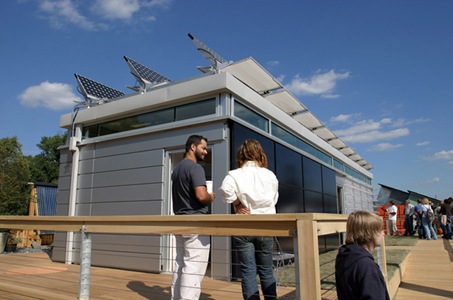
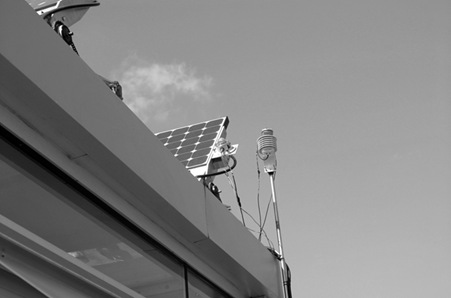
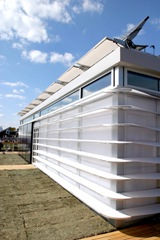
October 22nd, 2007 at 2:27 AM
Greenline » LEAFHouse - University of Maryland
[...] Corp, that creates a very high R valued translucent panel (the Nanogel material is also used in the Icarus House). The south facing slope of the roof also becomes the location of the solar hot water and PV [...]